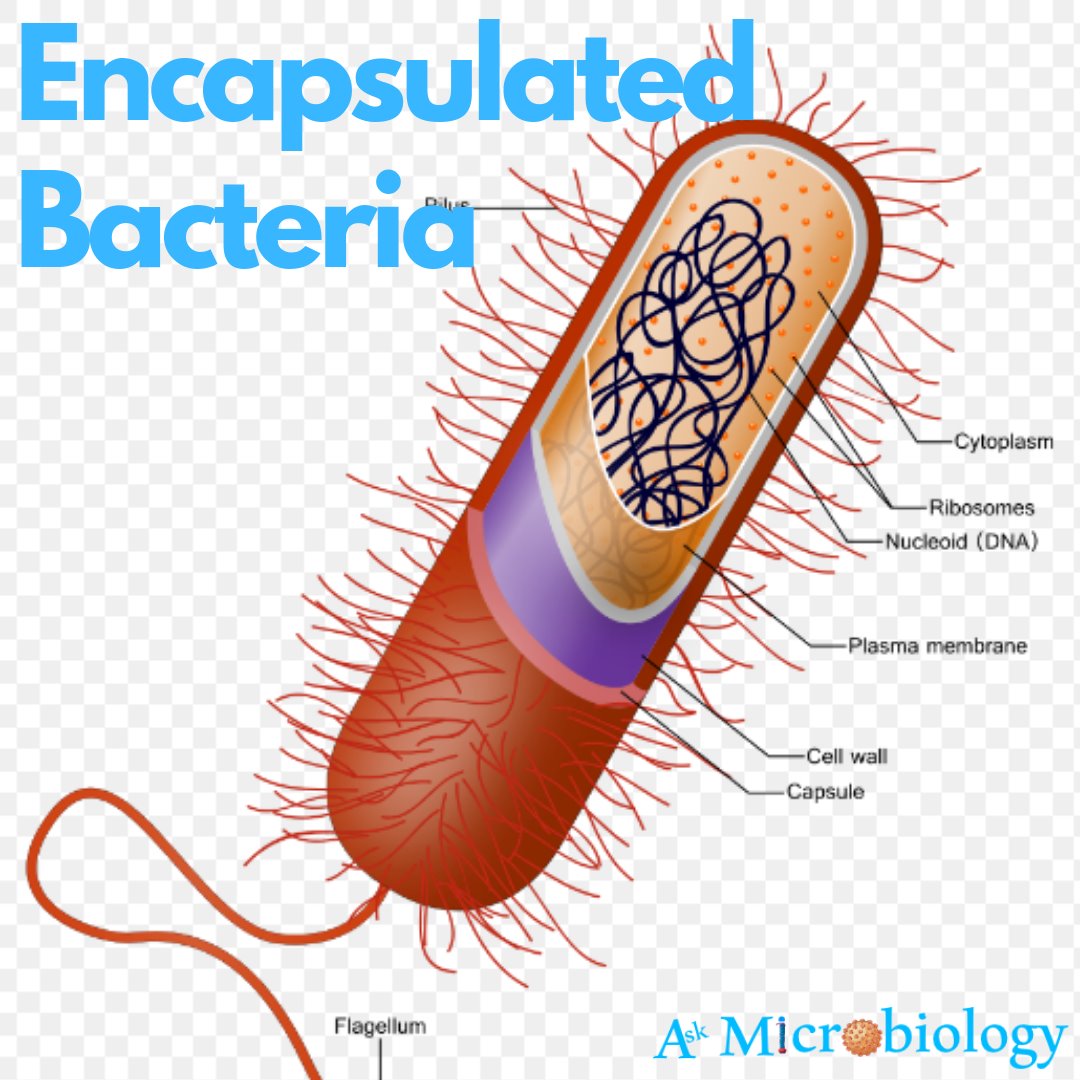Encapsulated bacteria are those bacteria that contain polysaccharide capsule around their cell wall
Examples:
Streptococcus pneumonia, Hemophilus influenza
Characteristics:
This capsule can be found either on gram positive or gram negative bacteria. The capsule is different from the cell wall of bacteria. It is usually composed of polysaccharide but sometimes it is composed of glycoproteins. This capsule can be stained separately to visualize the bacteria. This capsule can be loosely attached or tightly attach to the cell wall.
Function:
The functions of the capsule are as follows:
Attachment:
Capsule helps bacteria to attach to the surfaces. The capsule is polysaccharides in nature that stick with the surfaces.
Pathogenesis:
The capsule is virulent in nature. It is responsible for the pathogenesis of bacteria. It invades the immune system and allows bacteria to produce disease.
Desiccator:
Capsule doesn’t allow water to move outside the cell and thus prevent the cell from desiccation.
Capsule staining:
The capsule can be observed by means of different staining.
India ink:
The capsule can be observed as a clear neat zone around the bacteria as India ink can’t penetrate in the capsule.
Copper sulfate:
Copper sulfate is also used to stain the bacterial capsule.
Use in vaccination:
The capsule is pathogenic in nature. They induce immunity in the host. That’s why it can be used as vaccination.


Your point of view caught my eye and was very interesting. Thanks. I have a question for you. https://www.binance.com/si-LK/register?ref=V2H9AFPY
Your article helped me a lot, is there any more related content? Thanks!